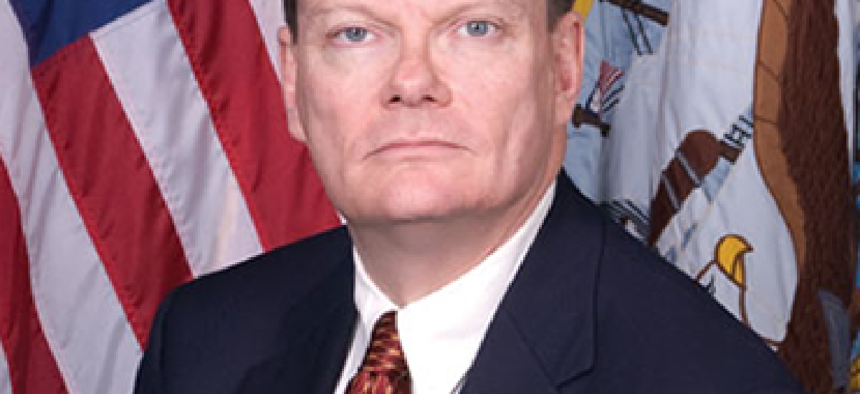How health IT hints at the future of innovation for DOD

The current effort to integrate DOD systems with the Cerner electronic health record represents a new direction in Pentagon IT culture and practice, according to CIO Terry Halvorsen.

The back-end work to integrate the Cerner electronic health record into Department of Defense networks and systems represents a new direction in Pentagon IT culture and practice, according to CIO Terry Halvorsen.
The Cerner health record, the main software for the MHS Genesis system which went live at a test site earlier this week, isn't an effort to modernize and centralize health care for the population of about 9.5 million who get care through the DOD. It is also, Halvorsen pointed out, a test case for a new kind of relationship between industry and the department.
"Cerner's customers and my customers are the same – we have to get that understanding," Halvorsen said. "That's going to be culturally groundbreaking as we wrap that up and learn from it,"
The integration and testing of MHS Genesis, the in-house name for the system acquired by DOD in July 2015, is expanding the parameters of how the DOD is evaluating cybersecurity and data. Instead of a checkbox approach, Halvorsen described a risk assessment process that is collaborative. He said that effort included calls to get engineers and top executives at Cerner on the same page as their counterparts at DOD.
In his final press conference as CIO, Halvorsen also touted achievements in deploying the Joint Regional Security Stacks, a network protection program based on commercial gear to replace hundreds of firewalls and perimeter security at DOD. The effort dovetailed with another Halvorsen initiative – moving off out-of-support operating systems to Windows 10 across the DOD enterprise.
"Windows 10 is the foundation that gets to the cloud, to distributed compute," Halvorsen said. A single operating system for the DOD, the "most complex enterprise IT network structure in the world," in Halvorsen's words, is what lets DOD "start moving at speed" to adopt new services.
He noted that the Defense Information Systems Agency just released a draft request for proposals for commercial cloud that represents broad areas of agreement among the services of what should be included in an enterprisewide system. While not every service got everything they wanted, Halvorsen said no one had to accept something that they didn't want.
Halvorsen also laid out the challenges facing his immediate successor, Dr. John Zangardi, the principal deputy CIO.
"I broke a lot of stuff, and now he gets to clean it up," Halvorsen said.
In the future the DOD CIO shop must do a better job distinguishing procurement – "buying things that are already out there," from acquisition, with its complex custom development requirements, Halvorsen said. He's also looking for the DOD to move faster on security and "put things online without additional testing" when "the risk of waiting outweighs the gain from a longer-term testing plan." He said that this model, common in the private sector, isn't just driven by profit: "You just can't keep up with the threat if you're not being a little more agile."
A new effort to support data center consolidation is coming as well. Part of the issue, said Halvorsen, is closing data centers in way that does not have a big impact on jobs in the affected communities -- a challenge DOD often faces when looking to close or reorganize bases and other facilities. Congress is due to be briefed on a final plan, before the full details are publicly presented.
Halvorsen also predicted that the Pentagon would maintain the Defense Innovation Unit Experimental innovation hub and the Defense Digital Service team. DIUx, he said, has been instrumental in identifying startups with ideas to replace the DOD's common access card ID system, and he predicted that the program's velocity is going to have a positive effect on the DOD's tech culture. Similarly, Halvorsen said that the DOD benefited from having a digital service team in the building. He credited them with "disruption" and "challenging some of our business and process assumptions."
Looking toward new technologies, Halvorsen predicted the development of a game-changing commercially available mobile device to handle multiple communications streams, including radio, wireless and satellite, operating in every available generation of network, from 2G on up.
"That is not science fiction," he said. "There is enough on the drawing board today that I think it will happen in the next 24 months."
NEXT STORY: No pause in DOD innovation programs






